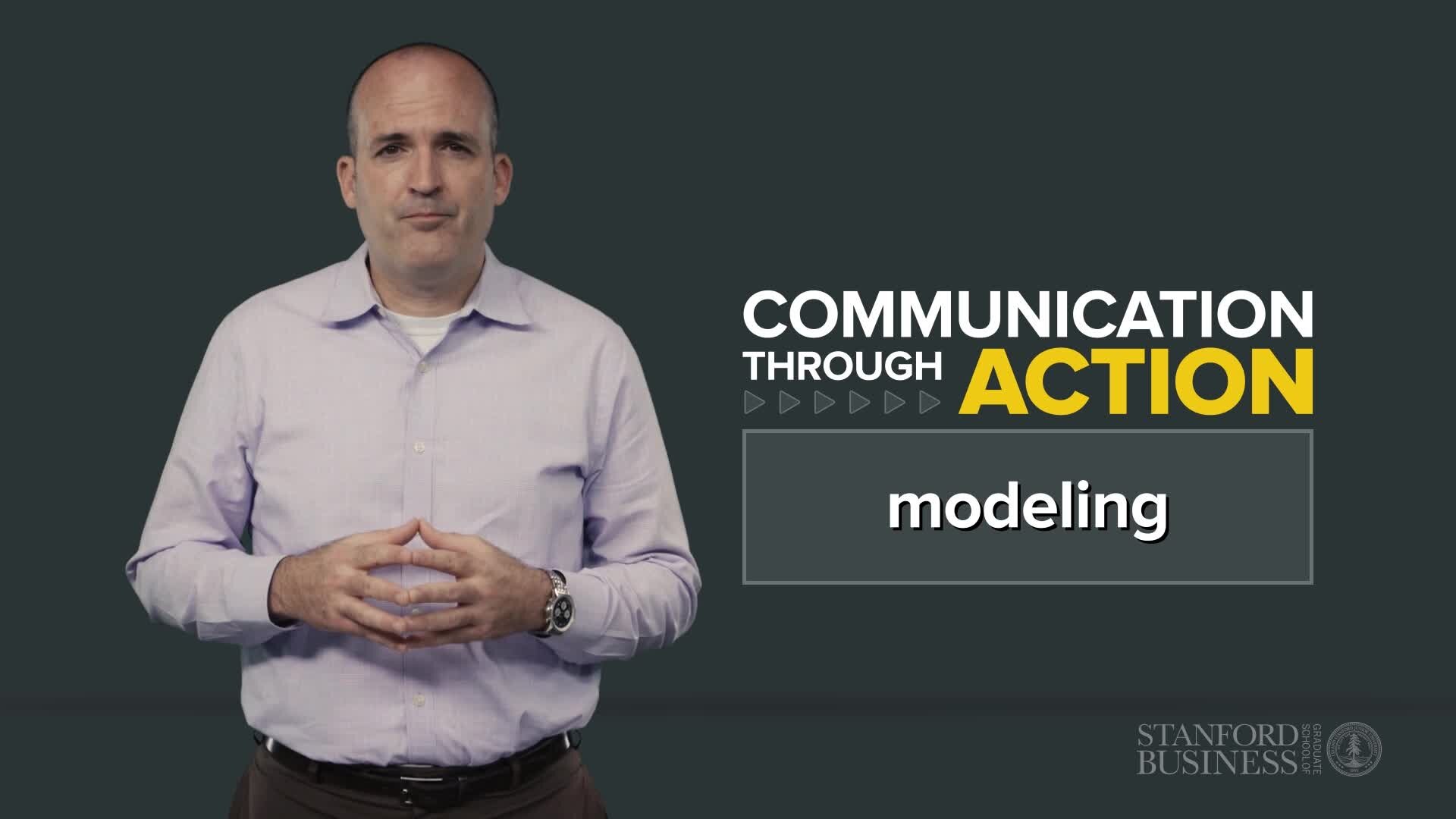Online Courses for Mid- and Senior-Level Professionals
Design requirements:
Asynchronous. Each course is designed to be completed over 8 weeks, with 2-3 hours of learning content and assignments per week that can be completed on each learner’s schedule.
Applicable. Course-takers are provided opportunities to apply what they are learning in their day-to-day roles as employees, managers, and leaders.
Experiential. The courses’ content and assignments ask learners to explore and experiment in order to understand the concepts.
Rigorous. The activities and assignments push learners to step out of their comfort zone and try new things.
Social. Courses leverage the wisdom of crowds, and course-takers are given opportunities and encouragement to learn from each other.
Global and diverse. Content is designed with an understanding that the learners come from a diverse, global audience.
Courses designed and delivered:
Communicating with Impact, a practical course for sharpening your communication, from delivering a presentation, to building rapport, to giving an apology.
Design Thinking: From Insights to Viability, a project-based course introducing design thinking and lean startup techniques.
Values-Based Leadership, a case-based course for exploring ethical situations, articulating your values, and understanding the perspectives of others.
Diverse by Design, a project-based course for exploring the barriers and potential solutions to creating and maintaining a diverse workforce.
Creating a Life of Consequence: How Happy, Meaningful, and Successful Lives Really Happen, a personal exploration course for applying the science on happiness and human flourishing to our own lives.
Design for Disruption, a practical course for making sense of what ‘disruption’ really means, what it looks like, and how to discover disruptive innovations in your industry.
The Friction Project: Leading Successful Change, a project-based course on the art of 'friction fixing' and embracing a leadership style that respects others’ time to manage organizational challenges and foster a productive and adaptable workplace.
Principled and Purposeful Leadership, a survey course on leadership competencies and values across an array of industries and contexts.
Technologies used:
NovoEd learning management system.
Industry-standard video recording, editing, and animation software.
Frame.io video collaboration platform.
Adobe Creative Cloud.
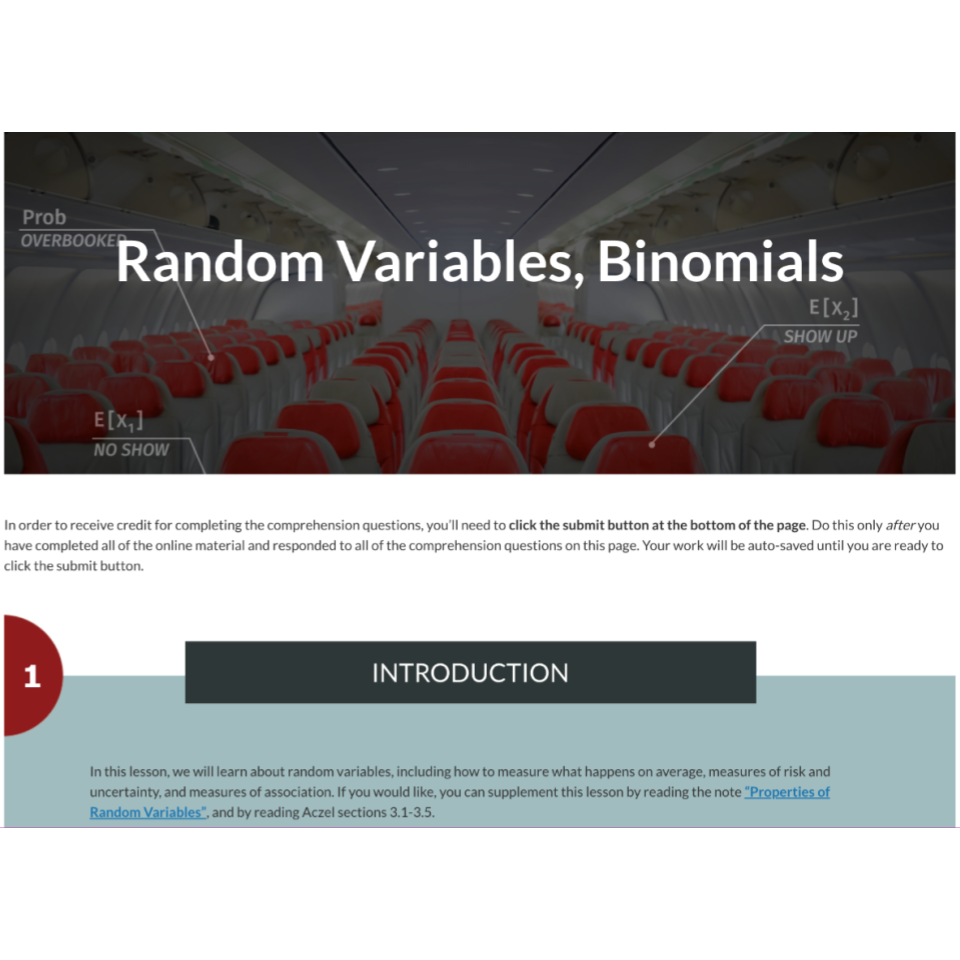
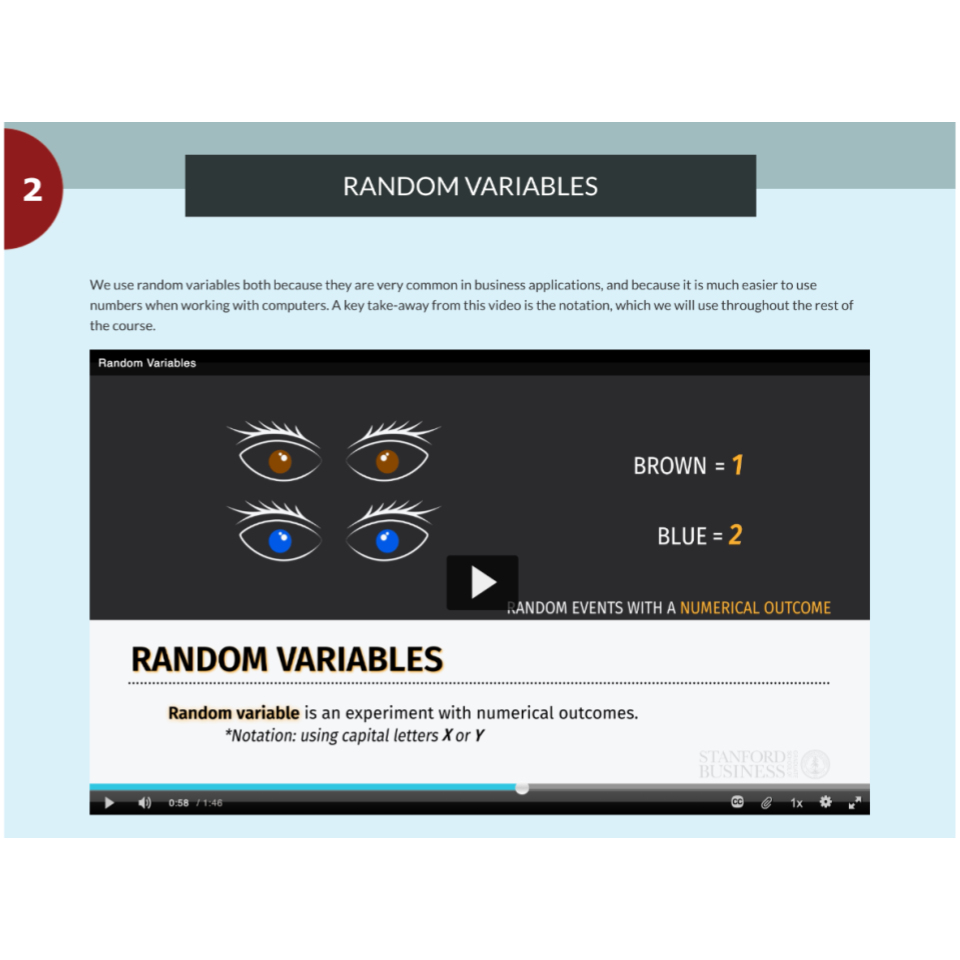
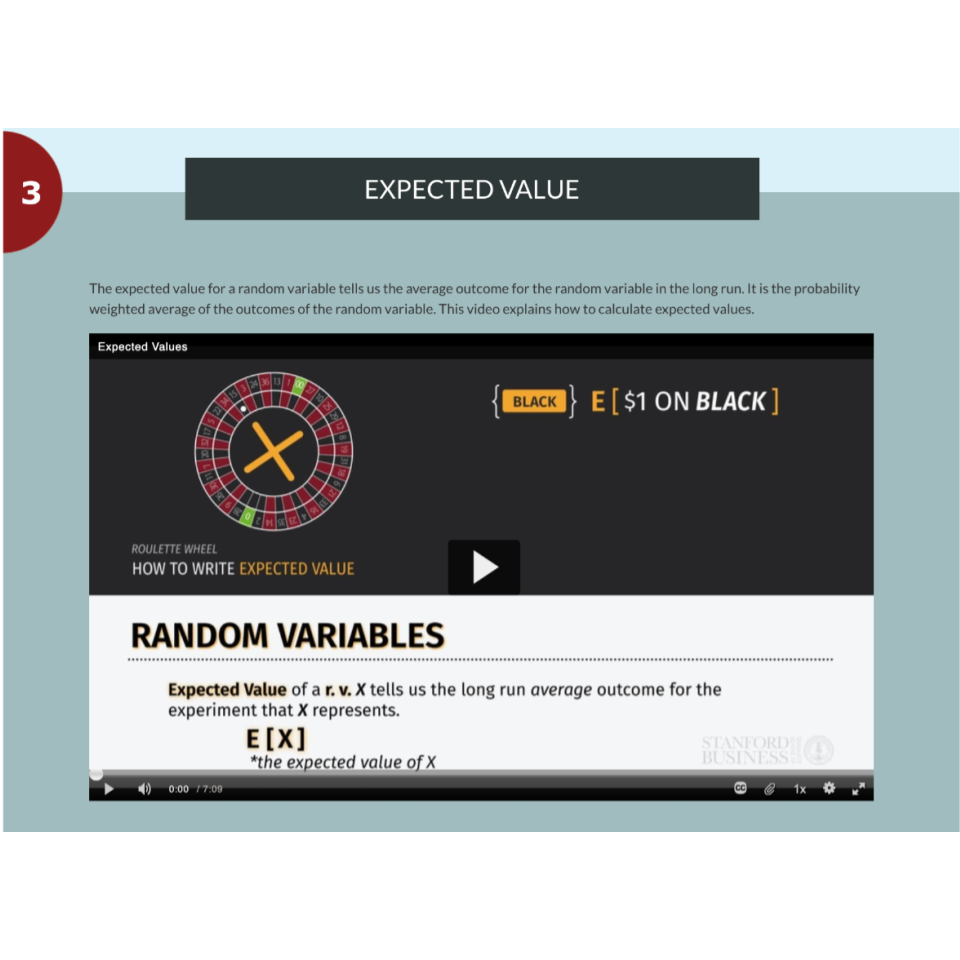
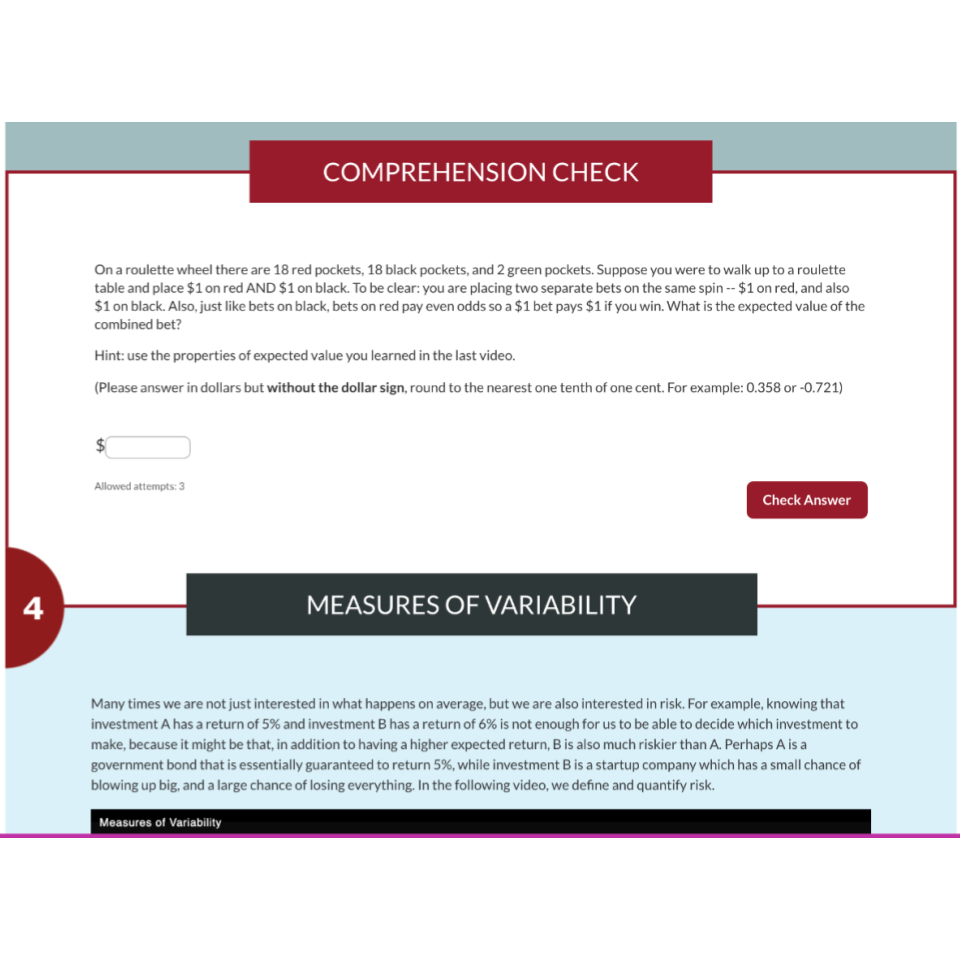
Flipped Course
Design challenge: Help instructors free up classroom time for activities and projects so that students can have opportunities to apply and refine their knowledge.
Learning solution: A flipped classroom design for Data and Decisions that replaced in-class lectures with e-learning modules teaching basic concepts and procedures. The online modules include lecture videos, interactive tools, and comprehension questions.
Technologies used:
Camtasia screencasting software.
Canvas learning management system.
Atomic Assessments LTI deployed in Canvas.
Conceptual Framework with Embedded Video
Design challenge: Help learners understand each component of a conceptual framework and how they apply in the real-world.
Learning solution: An interactive version of the course framework with clickable ‘nodes’ containing embedded video segments. The video segments were taken from interviews with practitioners and they illustrate how each aspect of the framework plays out in a real-world setting.
Technology used:
ThingLink visual documentation tool.
EDUCATIONAL PODCASTS
Design challenge: Build a sense of rapport with the course instructor, and help reduce feelings of isolation that students may experience due to the physically distant nature of learning virtually.
Learning solution: A series of podcasts titled, “A Conversation with Frank” used a conversational tone and mimicked the type of informal chat that a student might have with an instructor after class. I interviewed the professor myself, asking practical questions that a student might wonder like, “how do I calibrate my communication over email?” and “how do I use the principles of persuasion without being manipulative?”
Technologies used:
Industry-standard microphones and audio recording and editing software.
Podcast hosting in Kaltura.
lesson takeaways
Design challenge: Videos are a great way to teach and engage learners in online courses, but they’re not easy to search through or refer back to at a later point for quick reminders and key terms.
Learning solution: “Design Thinking To Go’s” summarize key points from lessons taught in a course on Design Thinking in a takeaway format. The materials include rich and visual examples and provide embedded templates that learners can download and work from.
Design Thinking To Go: Observation features notes and sketches made by a surgeon and a business operations professor during a joint observation of a colonoscopy procedure.
Design Thinking To Go: Space Saturation organizes insights from a greenhouse manager at a Community Supported Agriculture company into two formats: a user journey and an empathy map.
Design Thinking To Go: Brainstorming shows a brainstorming and voting session addressing the question: "How might we help patients take their medication on time and in the right dosage?"
Design Thinking To Go: Prototyping shows how both process diagram and role play techniques can be used to visualize a company's internal process for handling its social media.
Design Thinking To Go: MVPs which features a dog-walking application MVP and provides tools for creating a software MVP using only Google Slides.
Design Thinking To Go: Business Model Canvas first shows a Business Model Canvas for a product: a smart toothbrush. It then considers the same product from the perspective of a school district, and shares a Business Case Canvas for a smart toothbrush program.
Design Thinking To Go: Experiments shares experiments for testing the channel and value proposition of a healthy soft drink product. Notice how this experiment modifies the Value Proposition and Channel variables of the business model.
Technologies used:
E-publication authoring platform, Inkling.
Embedded templates created in GoogleSlides and GoogleDrawing.
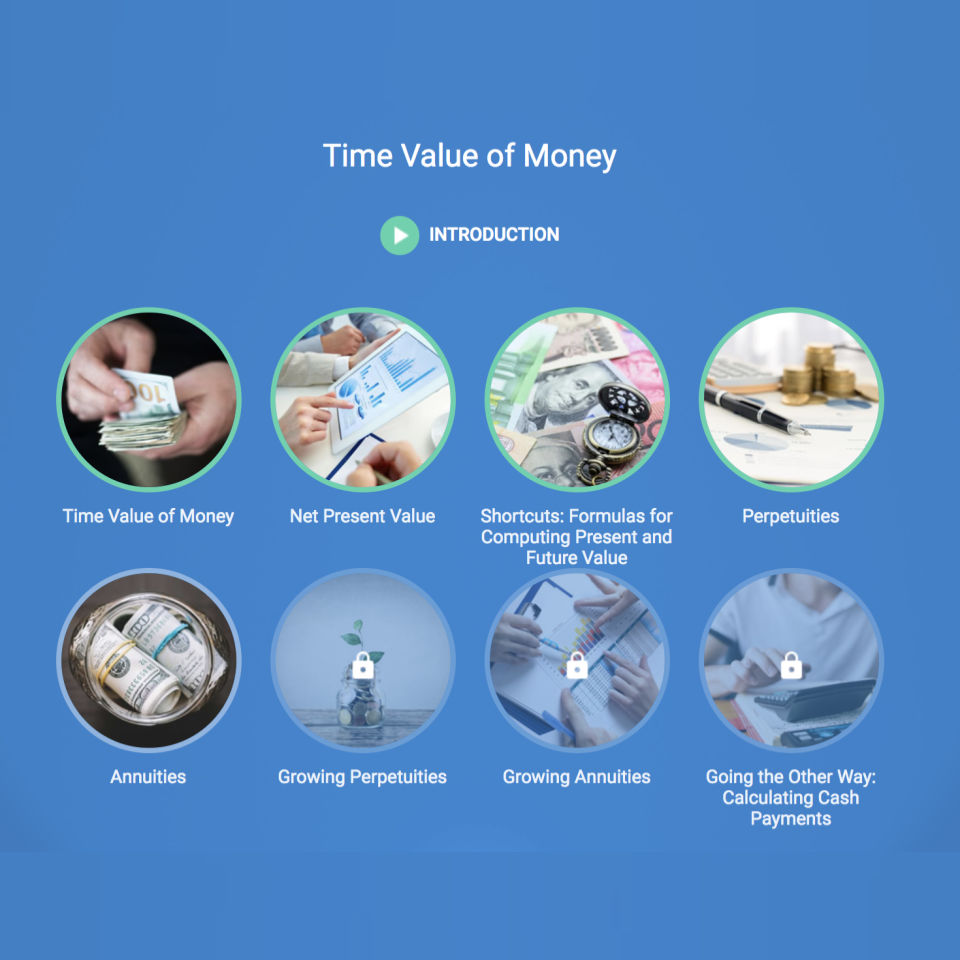
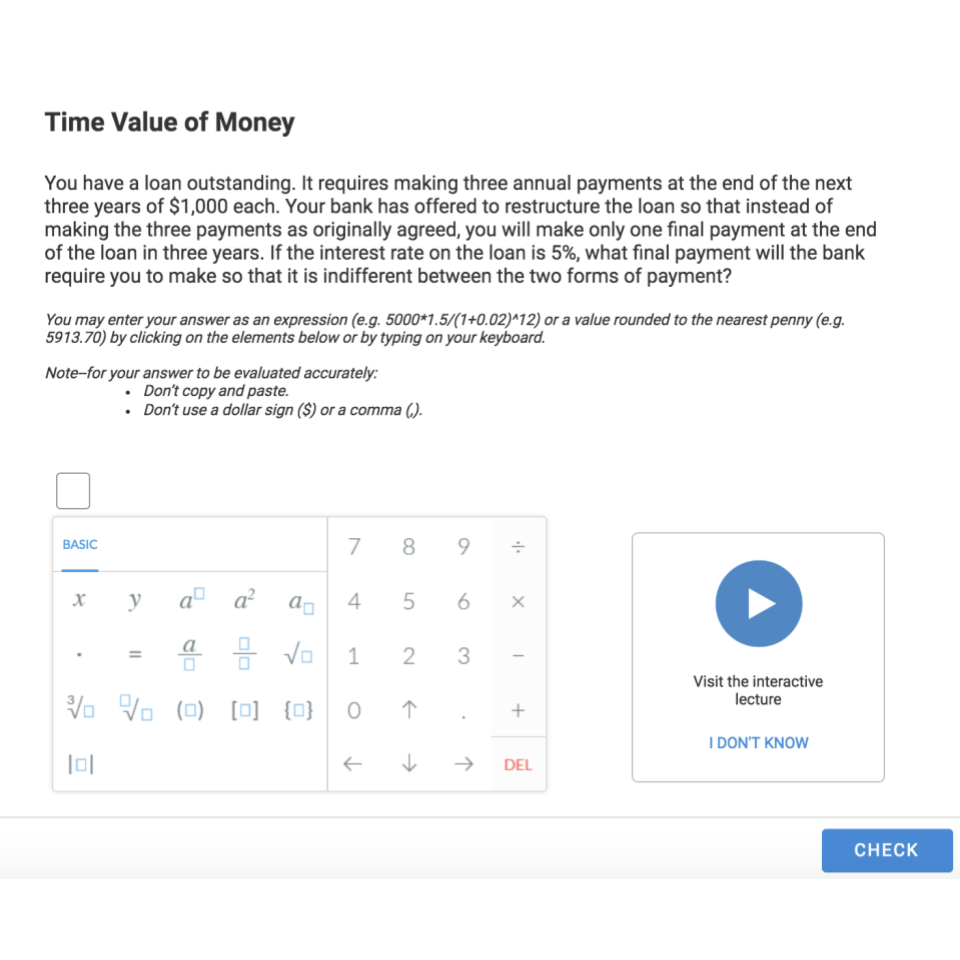
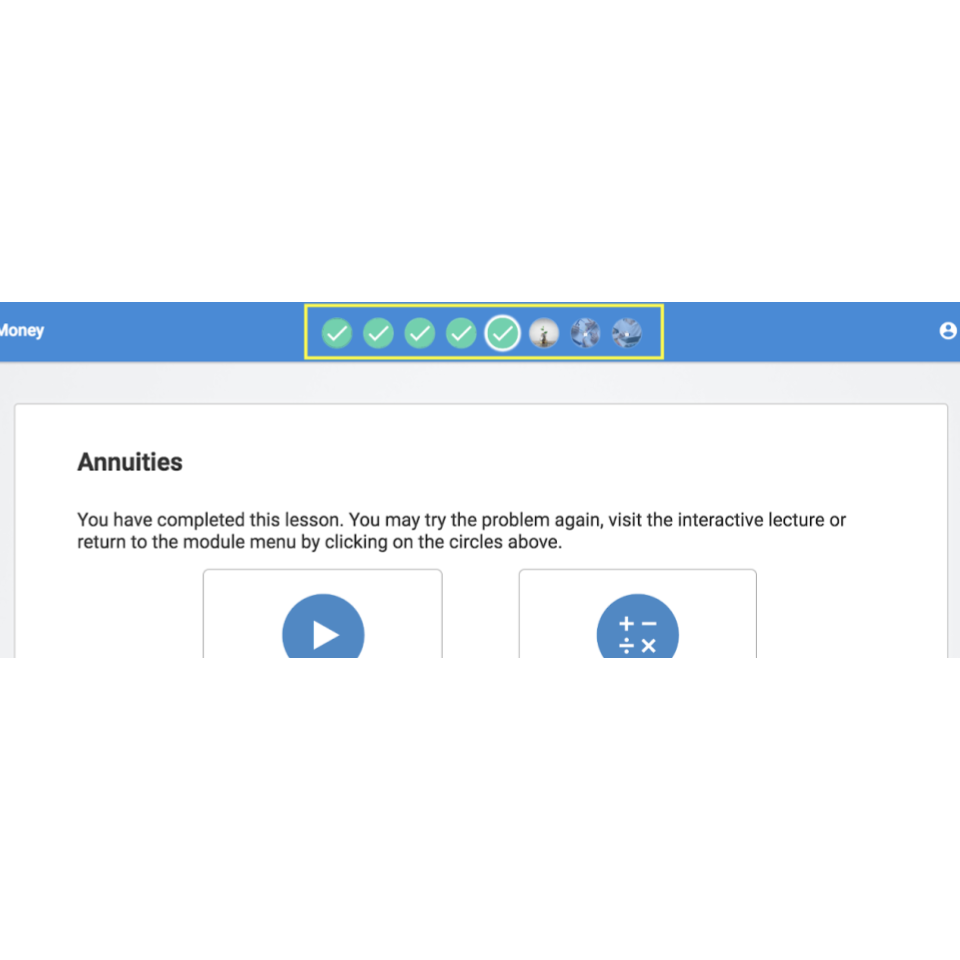
Adaptive Learning Module
Design challenge: Students have varying levels of previous experience in finance. We wanted to ensure that all students arrived at the first day of the Managerial Finance course with a foundation of background knowledge about the time value of money. Some students would already be familiar with the topic, whereas others would need a full tutorial.
Learning design: An adaptive learning module on time value of money module enabled students who answered initial diagnostic questions correctly to skip ahead through topics they were already familiar with while others could spend time learning or reviewing concepts that were new to them. Completion of the entire module was a prerequisite for the course.
Technologies used:
Adaptive learning authoring tool, SmartSparrow.
Custom webpage assembling the adaptive lessons, an introductory video, and showing learner progress through the module.
SmartSparrow LTI deployed in Canvas.





